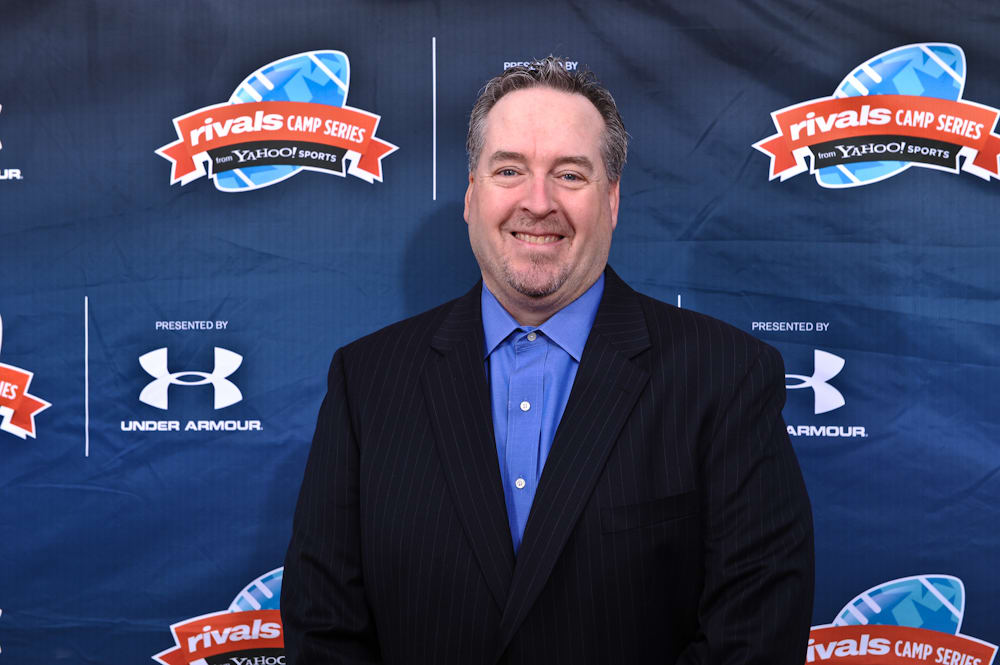On Friday, Mike Farrell and Mark Pszonak looked at the five teams that improved their recruiting ranking the most from 2017 to 2018. Well, today they look at the teams that went the opposite direction. Here are the five teams that declined the most from 2017 to 2018.
RELATED: Farrell Awards | Winners and Losers | NSD Takeaways
CLASS OF '18 RANKINGS: Rivals250 | Team | State | Position | JUCO
STANFORD

Decline: -43 (19 to 62)
The skinny: First, it is important to note that with a class of only 14 this year it definitely hurt Stanford’s overall class ranking. However, even with this, the top-level talent that the Cardinal have become accustomed to in recent years was somewhat lacking in 2018. Four-star quarterback Tanner McKee headlines the class, but he actually won’t be on campus until 2020 due to a two-year mission. Thomas Booker, Kendall Williamson and Michael Wilson are the other big names. There is potential in this small class, but a majority will have to become major contributors for it to become a success.
Farrell’s Take: This class is the same size as the 2017 class which finished in the top 25 so the small size of the class can’t be used an excuse. The bottom line is that David Shaw and staff didn’t get it done as they usual do for whatever reason. Academics at Stanford are always hard to navigate in recruiting but the Cardinal usually put together a top 25 class and this is a rough one.
ARKANSAS

Decline: -42 (24 to 66)
The skinny: Coaching changes can work positively or negatively with a recruiting class, and for the Razorbacks it was definitely the later. Chad Morris wasn’t named coach until the first week of December, so with only two months to piece this class together, it became a struggle. Retaining four-star linebacker Bumper Pool was important, adding four-star in-state defensive back Ladarrius Bishop was a nice grab and picking up three-star defensive back Joseph Foucha on NSD was a good conclusion to the class. Morris and his staff will be given a pass for this class, but much more will be expected in 2019.
Farrell’s Take: The coaching change and transitionary nature of this class obviously hurts but other programs did a much better job under the same circumstances. This is a much smaller class than the 2017 class so that has a lot to do with things. Arkansas should be able to load up at more positions in 2019, but when looking at all the transitionary classes in the country, this one was one of the worst.
TEXAS TECH

Decline: -32 (47 to 79)
The skinny: With a coach, Kliff Kingsbury, who is supposedly on the hot seat, this recruiting class was not a good start for what will likely be a very important year for the program. While the Red Raiders did only have 18 signees, which didn’t help their ranking, finishing with a recruiting class that is ranked between Louisiana Tech and Florida International is not good publicity. There were a few highlights in the group, such as the four-star trio of Gabriel Douglas, Erik Ezukanma and DeMarcus Marshall, and the late addition of in-state running back Ta’Zhawn Henry.
Farrell’s Take: Maybe the hot seat status of Kingsbury is the reason for the drop here and it doesn’t help that Texas Tech didn’t have the same numbers as last year. Either way, a No. 79 finish isn’t good. Last in the Big 12 with Kansas coming off such a brutal season is not acceptable at all.
OREGON STATE

Decline: -27 (45 to 72)
The skinny: Considering the Beavers head coach, Gary Andersen, suddenly resigned in October and the team finished with a 1-11 record, this shouldn’t be too surprising. With its coaching situation in limbo until Jonathan Smith was hired in early December, Oregon State faced an uphill battle with this class. The Beavers did pick up eight commitments in the two weeks prior to NSD, including athlete Matthew Tago and running back Jermar Jefferson, who both have the potential to be early contributors, but overall this group will likely need some time to prepare for life in the Pac-12.
Farrell’s Take: Like Arkansas, this was a transition class with a new coach trying to make up ground on schools that have been recruiting the same players for years. However, the 2.6 average star rating isn’t a good one and finishing last in the conference is always tough. Smith isn’t a household name and recruiting to Oregon State is always a challenge, but this was an especially rough year.
MICHIGAN

Decline: -21 (4 to 25)
The skinny: It is safe to say that not too many Michigan fans expected to be on this list a few months ago. Dropping from No. 4 to No. 25 is a surprise, considering the reputation Jim Harbaugh has in the recruiting world. This isn’t to say that the class is void of talent, as defensive end Aidan Hutchinson, defensive back Myles Sims, quarterback Joe Milton and linebacker Cameron McGrone all have star potential. However, losing Otis Reese to Georgia on NSD was a disappointing end to the class, even though this was expected by many.
Farrell’s Take: After back-to-back No. 4 finishes, this is a bit astonishing and losing their best recruit, Reese, on National Signing Day just capped off a very average recruiting year. I’m not sure if the excitement of Harbaugh being in charge has worn off or if the up-and-down season was the reason, but Michigan should always finish in the top 15 and usually in the top 10. This was clearly a down cycle.
